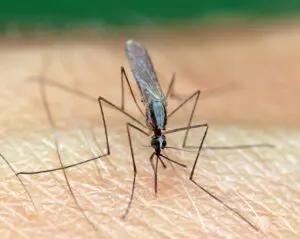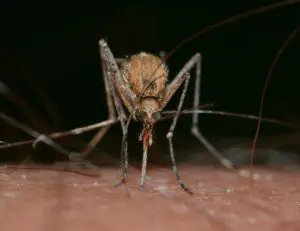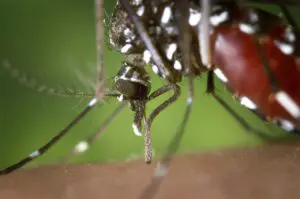
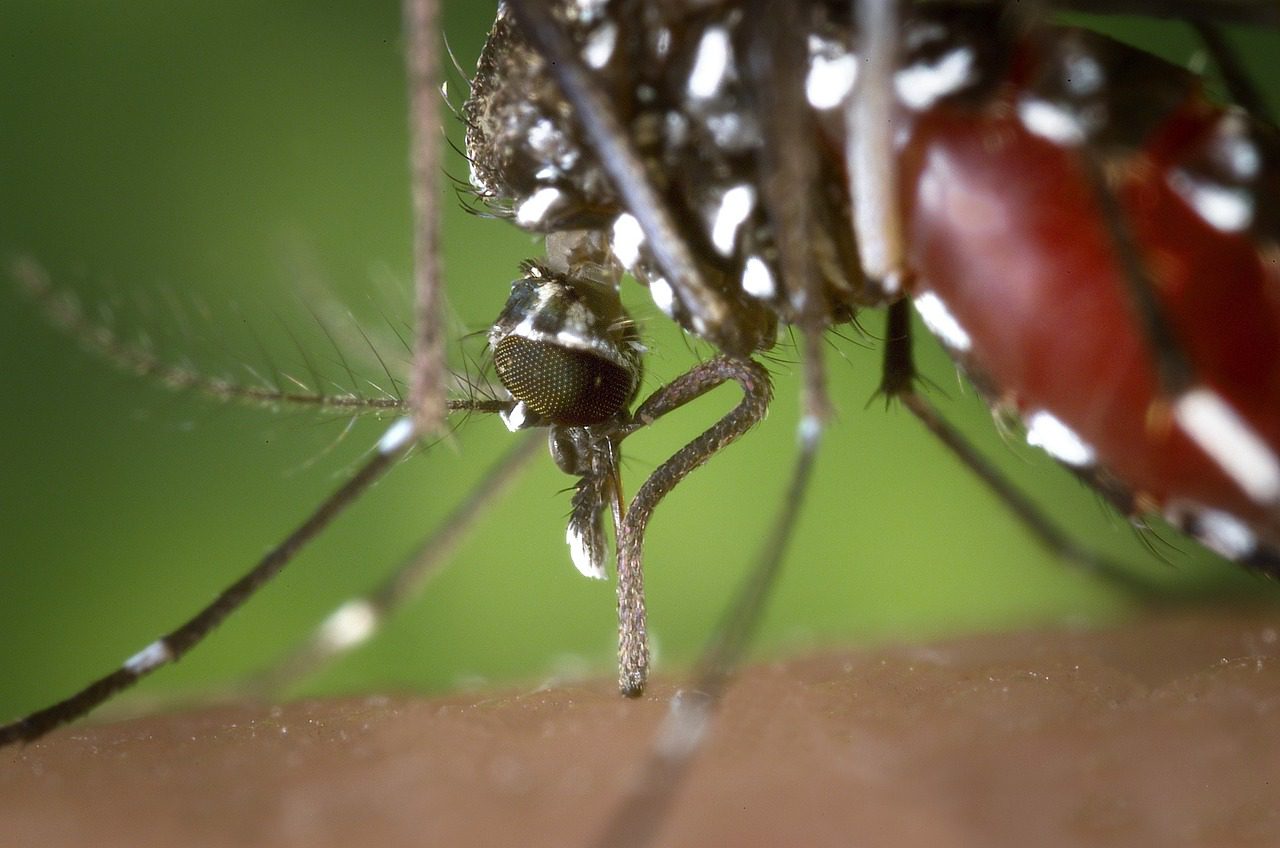
Anatomy of a Mosquito: A Closer Look
Though small in stature, Mosquitoes hold significant influence on ecosystems and human health across the world. In this article, we take a closer look at these tiny pests and unpack unseen facets of these insects. From their cryptic coloration to fascinating mimicry tactics and behavioral patterns, understanding mosquitoes is vital for effective pest management.
The question “What do mosquitoes look like?” goes beyond simple aesthetics and helps in identification and control strategies. Let’s take a closer look.
Size Matters: Distinguishing Mosquito Species by Dimensions
Mosquitoes come in a variety of shapes and sizes and in the United States, where mosquito populations are diverse, understanding the differences in size among species can be crucial for effective control and prevention strategies.
So, what do mosquitoes look like? This is an important question that provides insight into these tiny yet pesky insects. While the general appearance of mosquitoes is familiar to many, there are subtle variations in size and morphology that separate one species from another.
In the US, mosquito species range in size from barely visible specimens to larger, more robust buzzing nuisances. For example, the Aedes albopictus, commonly known as the Asian tiger mosquito, is on the smaller side of the spectrum. With its distinctive black and white striped legs and small size, it can be easily identified.
Conversely, the Psorophora ciliata, or gallinipper mosquito, is one of the largest mosquito species in the US. Its size can be quite scary when compared to other mosquitoes, and its distinctive dark coloration sets it apart.
Size isn't the only factor to consider when identifying mosquito species. The shape of the body, the length and color of the mouthpart used for feeding, which is referred to as the proboscis, and the pattern of markings on the wings all play a role in differentiation and identification.
For instance, the Culex pipiens, known as the northern house mosquito, has a slender body and a long, sharp proboscis that is perfectly suited for feeding on birds. Whereas the Anopheles quadrimaculatus, a primary vector for malaria in the US, has distinctive pale spots on its wings, important in its identification.
Understanding these size variations and identifying characteristics is imperative for effective commercial pest control to residential pest control across the United States. By having greater insight into what mosquitoes look like and being able to distinguish between different species, we can better target control measures and mitigate the spread of mosquito-borne diseases.
Flight Patterns: How Mosquitoes Move in the Air
When it comes to the question of “what do mosquitoes look like,” it is also important to unpack the appearance of movement. Understanding these flight behaviors can provide insights into mosquito species.
Different mosquito species showcase distinct flight patterns that contribute to their survival and reproduction. Some species, like the Aedes aegypti, are known for their erratic flight movement that can be described as a quick darting from one location to another - this is when they are in search of blood meals. The Culex pipiens have a more methodical flight pattern, often flying in a steady, straight path as they search for suitable breeding sites.
Despite these variations in flight movement, mosquitoes share certain characteristics in their aerial movements. They are quick to navigate through various environments, from urban areas such as restaurants, homes and yards to natural forests, and wetlands. Their ability to fly low to the ground also allows them to detect carbon dioxide and body heat emitted by potential hosts, guiding them towards their next blood meal.
It is also important to note that mosquitoes can change their flight patterns in response to the environment, with temperature, humidity, and wind speed altering their speeds. This ability to quickly adapt contributes to their overall reproductive success.
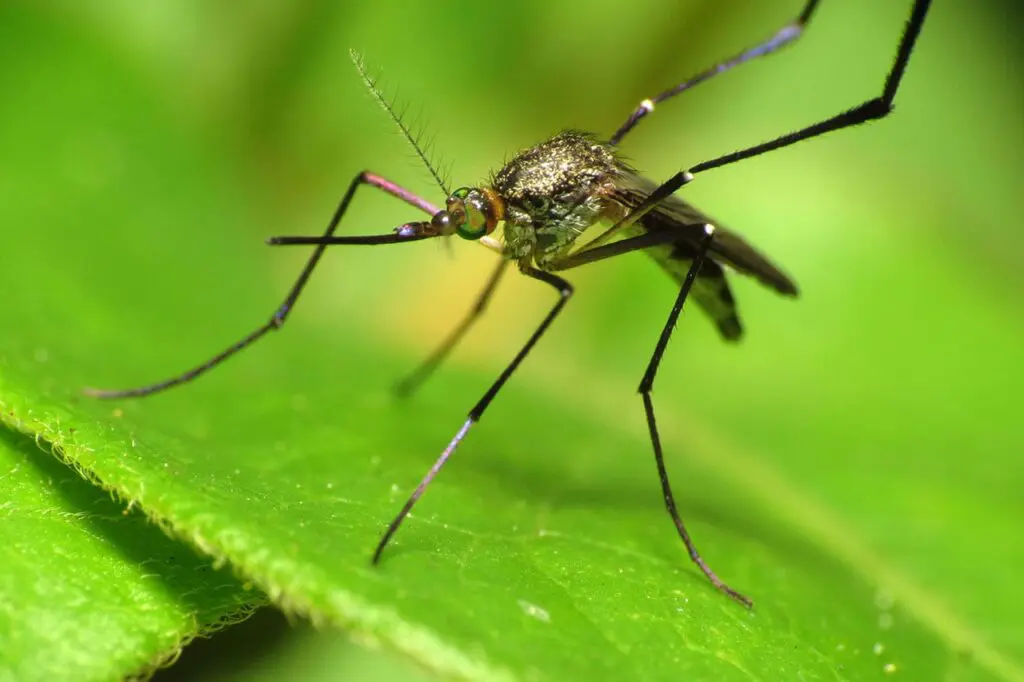
Sounds and Communication of Mosquitoes
We have asked the question “What do mosquitoes look like?’ but we also need to ask “what do mosquitoes sound like?.” Mosquitoes are not only known for their itchy bites but also for the distinctive buzzing sound they produce. This buzzing is often characterized as a high-pitched whine, which is actually a result of the rapid beating of their wings.
The annoying sound actually serves a variety of purposes for mosquitoes, including communication and navigation. Male mosquitoes, for example, use their buzzing to attract females during mating rituals. The frequency and intensity of the buzz can signal the male's suitability as a mate, helping to facilitate successful reproduction.
In addition to mating, the screeching sound plays a role in host-seeking behavior. Female mosquitoes require blood meals for egg production, and use the sound to locate potential hosts. They are drawn to the vibrations and carbon dioxide emitted by mammals, including humans, and this is what guides them towards a blood meal source.
Another important thing to note is that the buzzing can serve as a warning signal to potential predators. Some animals have learned to associate the sound of mosquitoes with an impending attack, allowing them to take evasive action - the same can be true for humans.
Overall, the buzzing sounds produced by mosquitoes are not just annoying, they are actually integral to the insects' survival and reproduction, playing a role in their interactions with the environment.
How Mosquitoes Feed
When it comes to the question “what do mosquitoes look like?”, it's important we take a closer look at their mouthparts. Mosquitoes use specialized mouthparts and feeding mechanisms to get blood meals from their hosts. Their mouthparts are made up of several components which include the labrum, mandibles, maxillae, and hypopharynx, which work together to pierce the skin and extract blood.
Female mosquitoes require blood meals for egg production and are fully equipped with particularly efficient feeding apparatus. They use their sharp, needle-like mouthparts to penetrate the skin of their hosts and locate blood vessels. Saliva injected during feeding contains anticoagulants, which prevent blood from clotting and facilitate the feeding process.
Understanding how mosquitoes feed is essential for developing effective control strategies. By targeting their feeding behaviors, researchers can disrupt their ability to obtain blood meals and reduce the transmission of mosquito-borne diseases.
Close-Up Views of Mosquitoes
What do mosquitoes look like - close up? Taking a closer look at mosquitoes reveals a wealth of intricate details in their anatomy and appearance. From their delicate antennae to their spindly legs, every aspect of a mosquito's morphology serves a specific purpose in its life cycle and behavior.
Their antennae play a crucial role in sensing chemical cues like the pheromones released by potential mates or carbon dioxide emitted by hosts. These sensory organs are tuned to detect even the faintest signals, guiding mosquitoes in their search for food and mates.
Mosquito legs are another fascinating feature. They are equipped with specialized structures for walking, gripping, and even sensing vibrations. These appendages allow mosquitoes to navigate diverse environments, from dense vegetation to urban surroundings, with remarkable agility.
This deeper understanding of anatomy can inform efforts to control mosquito populations and mitigate the spread of mosquito-borne diseases.
Mosquito Life Cycle Visualized
Understanding the life cycle of mosquitoes is vital for effective control and prevention efforts. From egg to adult, mosquitoes undergo a series of distinct stages, each marked by dramatic changes in appearance and behavior.
What do mosquito eggs look like? Mosquito eggs are typically tiny and elongated, resembling miniature rafts or clusters. These eggs are laid in water or in areas prone to flooding, providing a suitable environment for larval development.
As the eggs hatch, they give rise to larvae which are commonly known as wrigglers. These wrigglers possess elongated bodies and distinctive respiratory siphons for breathing underwater. Larvae feed on organic matter and algae present in their aquatic habitat, growing rapidly before entering the pupal stage.
During the pupal stage, mosquitoes undergo metamorphosis, transforming into their adult form. Once emerged, adult mosquitoes display characteristic features such as slender bodies, elongated proboscis for feeding, and intricate wing patterns.
Understanding what do baby mosquitoes look like and the visual progression of mosquitoes through their life stages is essential for implementing targeted control measures.
By targeting vulnerable stages of the mosquito life cycle, such as larvae and pupae, researchers and vector control specialists can effectively reduce mosquito populations and minimize the transmission of mosquito-borne diseases.
Nature's Disguise: Mosquitoes in Camouflage
What do mosquitoes look like? Well, sometimes you may have trouble trying to even find them! Mosquitoes have evolved various strategies to blend into their natural habitats, using color and patterns for camouflage. Their bodies often feature colors that match the surrounding environment, helping them avoid detection by both predators and prey.
In densely vegetated areas, mosquitoes usually exhibit mottled patterns or greenish tones that mimic leaves and shadows, making them virtually indistinguishable from their surroundings. Some species also possess disruptive coloration, featuring contrasting patterns that break up their silhouette and make them harder to spot.
Camouflage is especially crucial for female mosquitoes during the blood-feeding and egg-laying stages. By blending into their surroundings, they can approach hosts and breeding sites undetected, increasing their chances of reproductive success.
Understanding how mosquitoes use color and patterns for camouflage provides valuable insights into their ecology and behavior.
Mimicry Matters: Mosquitoes' Copycat Tactics
Mimicry is a common phenomenon among mosquitoes, with some species evolving to resemble other organisms for survival and reproductive advantages. So, what do mosquitoes look like? Well, they can mimic the appearance and behaviors of other insects, animals, or even inanimate objects to deceive predators or hosts.
One example of mimicry in mosquitoes is Batesian mimicry, where harmless or palatable species evolve to resemble harmful or unpalatable ones. Some non-biting midges mimic the appearance of mosquitoes, gaining protection from predators that avoid biting insects.
Another type of mimicry observed in mosquitoes is Müllerian mimicry, where multiple harmful species converge on a similar appearance to reinforce a shared warning signal. This mutual resemblance benefits all species involved by increasing the effectiveness of the warning signal and reducing the likelihood of predation.
The evolution of mimicry among mosquitoes showcases the importance of visual cues and signals in their ecology and behavior. By mimicking other organisms, mosquitoes enhance their survival and reproductive success.
In Summary: Decoding the Visual World of Mosquitoes
Mosquitoes are complex creatures with a diverse range of visual characteristics and behaviors. From their intricate coloration and patterns to their unique mating rituals and feeding habits, mosquitoes play a significant role in ecosystems worldwide.Understanding what do mosquitoes look like? and their behaviors is essential for effective pest management and disease prevention.
Excel Pest Services offers comprehensive solutions for mosquito control, utilizing advanced techniques and environmentally friendly approaches to reduce mosquito populations and minimize their impact on your home or business.
With Excel Pest Services, you can trust that your pest management and mosquito pest control needs will be handled with expertise and care, allowing you to enjoy your surroundings without the nuisance and health risks associated with mosquitoes.
Contact Excel Pest Services today.




